Search Images
Browse Content (p. 940)
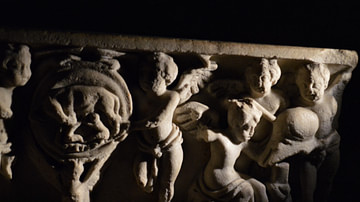
Image
Cherub Detail from Paleochristian Sarcophagus
Detail of cherubs from a paleochristian sarcophagus (c. 4th to 6th century CE), showing a crest with the wolf that suckled Romulus and Remus (left) and cherubs forging Mars' helmet (right). In the crypt of the Abbey of St. Victor, Marseille...
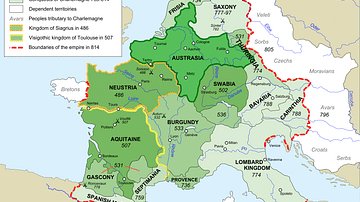
Image
Map of Francia
Map of Francia from 481 to 814 CE.
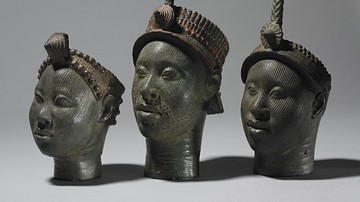
Image
Brass Heads from Ife
Three head sculptures from Ife, capital of the kingdom of Ife (11-15th century CE) in what is today southern Nigeria. The left and right examples are painted plaster casts of brass originals. The centre head is a brass original. Height: approx...
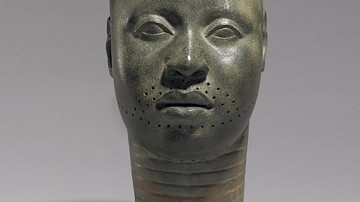
Image
Ife Head Sculpture
A sculpture from Ife, capital of the kingdom of Ife (11-15th century CE) in what is today southern Nigeria. Painted plaster cast of a brass original. Height: 35.5 centimetres. 14th to early 15th century CE. (Brtish Museum, London)

Image
Bust of Charlemagne
Bust of Charlemagne (Charles the Great, also known as Charles I, l. 742-814 CE), King of the Franks (r. 768-814 CE), King of the Franks and Lombards (r. 774-814 CE), and Holy Roman Emperor (r. 800-814 CE), in the Aachen Cathedral Treasury.
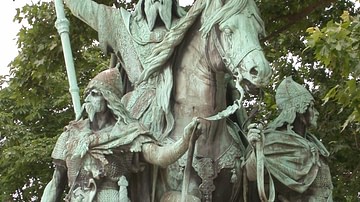
Image
Statue of Charlemagne
Statue of Charlemagne (Charles the Great, also known as Charles I, l. 742-814 CE), King of the Franks (r. 768-814 CE), King of the Franks and Lombards (r. 774-814 CE), and Holy Roman Emperor (r. 800-814 CE), in front of the Notre Dame, Paris...
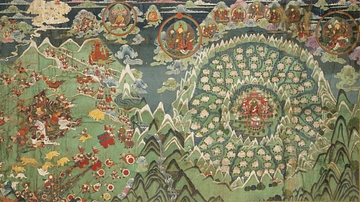
Image
Kingdom of Shambhala
Kingdom of Shambhala and the Final Battle; Mongolia; 19th century; pigments on cotton; 44 x 87 1/2 in. (111.8 x 222.3 cm); Musée des arts asiatiques – Guimet, Paris; MG24416 (HAR 31352); photograph by Thierry Ollivier © RMN-Grand Palais/Art...
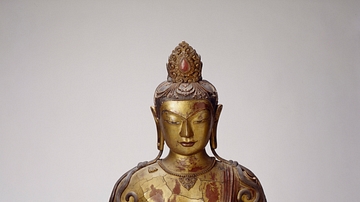
Image
Buddha Amityaus
The Buddha Amityaus; possibly Chengde (Jehol), China; Qing dynasty, reign of the Qianlong Emperor (1736–1795 CE); hollow dry lacquer; 40 x 27 x 18 in. (101.6 x 68.6 x 45.7 cm); Asian Art Museum of San Francisco; The Avery Brundage Collection...
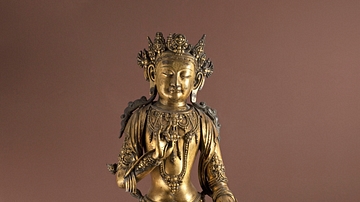
Image
Bodhisattva with Yongle Reign Mark
Bodhisattva; probably Qutan Temple, Qinghai Province, China; Ming dynasty, Yongle reign mark (1403–1424 CE); gilt bronze; 53 1/2 x 26 x 17 7/10in. (136 x 66 x 45 cm); Musée Cernuschi, Asian Arts Museum of Paris; MC5173; photograph © Stéphane...
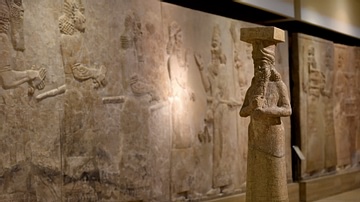
Image
Statue of a Minor Deity & Tributary Scenes Khorsabad
On the right, a statue of a minor deity (probably Ea) stands and holds a vessel in his hands, from which water flows. It is one of a pair of statues which were found outside the entrance (in front of trees) to the Temple of Sin at Khorsabad...